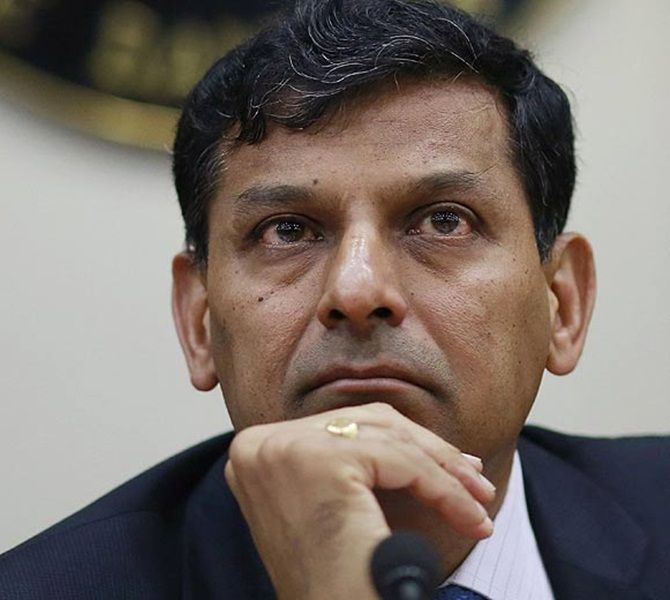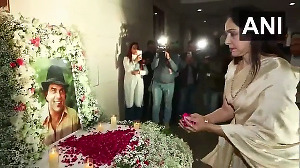To cut interest rates, the central bank head has to open up a debate on inflation target revision, says Abheek Barua.
 There has been much confusing reportage in the pink papers as to who the next Reserve Bank of India (RBI) governor will be.
There has been much confusing reportage in the pink papers as to who the next Reserve Bank of India (RBI) governor will be.
The names of a couple of bankers have popped up though the reporters would have had us believe that the government would prefer an economist at the helm.
They also seem to have assumed the fact that the successor (perhaps barring one on their list) would go easier on interest rates and pay more attention to growth.
A dove, in other words, rather than an inflation hawk to use the jargon. Whether this is true remains to be seen.
Only one “reported” candidate has made a public statement in the recent past calling for a sharp cut in rates at a time when inflation did seem to be on a downward trend.
However, from what I understand, the bond markets have taken this seriously and bond yield (real time interest rates for the uninitiated) have fallen at least partly in the hope that the new monetary chief will be more willing to cut rates than current RBI Governor Raghuram Rajan.
This begs a deeper question. Is it really possible for an RBI head to be more dovish in the new monetary policy framework?
Or does it willy-nilly forces the central bank to focus largely on a measure of inflation that is likely to remain somewhat sticky despite a visible slowdown in growth?
Let’s take a hypothetical case — with headline consumer price inflation (the official target of the central bank) at 5.8 per cent as it is now, would another governor be able to pare the interest rate if indeed its objective would be get to five per cent in the near term?
As Dr Rajan himself pointed out in his interaction with journalists on Saturday, he would be willing to cut interest rates if someone was able to actually show him that inflation was “very low”.
Raghuram Rajan’s exit: Complete Coverage
Given that the inflation target is itself fuzzy, the government could somewhat sneakily help a new governor a by giving him an easier target. But this is easier said than done.
The level of five per cent (that the RBI has taken as a near-term target) as also the medium-term target of four per cent is so deeply embedded at least in the financial markets’ collective mind that any attempt to dilute it would seriously compromise both the RBI and the central bank’s credibility.
I would argue that if the new governor indeed wanted to give cut rates more actively, he would have to open up a serious debate on whether there are enough reasons for the inflation target it to be modified.
I personally think changing the target is desirable but whether there’ll be a “buy-in” from the many experts who have carried a torch for CPI targeting is an open question.
Thus a new debate on the RBI’s goals is bound to generate considerable heat.
What are the options in setting a revised target for inflation? The easiest way would be to take a mix of the consumer price index (currently the sole inflation target) and combine it with the wholesale-price index.
This would certainly satisfy industry and those who believe that the CPI does not adequately capture pricing power of companies.
I would also claim that in the Indian context, the disinflationary pressures that are associated with both slow domestic and global growth are best captured in wholesale manufacturing indices.
That said, the wholesale index has been dissed so badly in the past and a veritable campaign had built up to replace it with consumer price inflation as a gauge that reflects the burden of high prices on households that resurrecting the wholesale index in any shape or form in the target would be difficult.
The other option would be to follow other central banks like the US Federal Reserve and strip out things like fuel and arrive at a “core’’ index.
The Fed looks closely at the core personal consumption expenditure (PCE) deflator that is roughly the same as a consumer index for core items. But this simple device might not help entirely in the Indian context.
Core inflation in India has remained sticky and high due to the presence of services - categories like education, health care and housing.
This is because of massive supply shortage caused by partly by state failure in supplying these services coupled with growing affluence in rural and semi-urban areas. Interest rates will hardly help in in keeping a lid on these prices.
Thus a gauge that excludes elements that have massive supply deficiencies is most appropriate in identifying and isolating those components that are indeed responsive to monetary management.
While this is analytically simple, it is difficult for anyone other than a trained economist to comprehend and introducing it would raise issues of transparency.
If the new governor is reluctant to open the can of worms that a fresh debate on monetary targets and the policy framework is boundand yet wants to give growth a better chance, it is difficult to see how is he is likely to succeed.
Finally the formation of a monetary policy committee and the process of collective decision making bring its own set of risks.
A majority of hawks in the committee would scuttle any case made by the governor to pare interest rates even if the governor does have the casting vote.
Too many doves on board would raise questions of whether they have been appointed to do the government’s bidding.
Like it or not, we are in for a period of high interest rates.
The writer is chief economist, HDFC.










